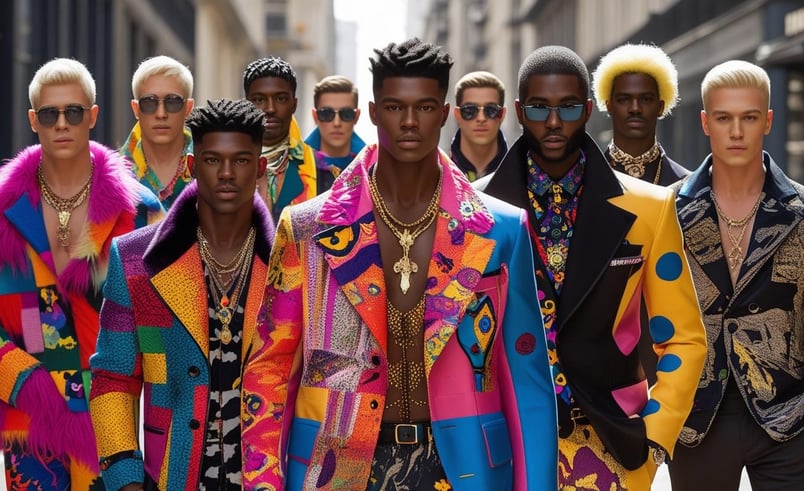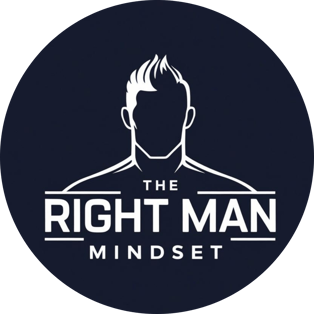Style with Substance: What Your Outfit Says About Your Mindset and Personal Power
Style with Substance: What Your Outfit Says About Your Mindset and Personal Power
STYLE
6/5/20257 min read


Style with Substance: What Your Outfit Says About Your Mindset and Personal Power
People’s clothing choices reflect more than just fashion preferences; they reveal key aspects of their mindset. An outfit can signal confidence, creativity, discipline, or their approach to challenges and opportunities. Understanding this link helps decode what someone values or how they want to be perceived.
Style is often a form of nonverbal communication. It shapes first impressions and influences how others respond, which can impact personal and professional interactions. Examining what a person wears offers insights into their priorities and mental state.
The relationship between clothing and mindset goes beyond appearance. It shapes behaviors and attitudes, making style a subtle yet telling indicator of who someone is beneath the surface.
The Psychology Of Personal Style
Personal style reveals deeper layers of identity and communication than mere fabric and color. It reflects choices rooted in personality, social cues, and emotional needs.
Fashion Choices And Self-Expression
Fashion choices act as a mirror to individual preferences, values, and personality traits. People select clothing to highlight aspects of themselves, like creativity, professionalism, or conformity.
Colors, textures, and styles can signal moods or preferences. For instance, bold colors often indicate confidence or a desire to stand out, while neutral tones might reflect practicality or a reserved nature.
The decision to follow trends or create unique looks also reveals how a person approaches social norms. Embracing trends can suggest adaptability, while a distinct style may imply independence.
Outfits As Nonverbal Communication
Clothing functions as a form of language without words. It conveys messages about social status, group affiliation, and cultural background without explicit explanation.
In professional settings, a well-structured outfit may communicate competence and reliability. Casual dress, conversely, might communicate approachability or creativity, depending on context.
Nonverbal cues from style guide first impressions. For example, polished attire can foster trust, while disheveled clothing might inadvertently signal disinterest or neglect.
Style And Emotional Wellbeing
Clothing can directly influence mood and confidence. Wearing preferred styles often enhances self-esteem and helps manage social anxiety.
Comfort and fit also play crucial roles. Ill-fitting or uncomfortable clothes can lead to distraction and lowered emotional comfort throughout the day.
Some use fashion as a coping mechanism or a form of self-care, choosing outfits that provide a sense of control or uplift emotional states during stressful times.
Summary Table:
Aspect Psychological Role Example Self-Expression Projects personality Wearing bold colors Nonverbal Communication Sends social and cultural signals Business suit indicates formality Emotional Wellbeing Affects mood and confidence Cozy sweaters reduce anxiety
How Your Outfit Reflects Your Mindset
Clothing choices often mirror internal states and priorities. They can show levels of confidence, focus, and even emotional well-being. Each aspect shapes how others perceive a person and how that person navigates daily challenges.
Confidence And Wardrobe Choices
Confidence frequently influences how someone selects their wardrobe. Those with high self-assurance tend to choose bold or well-fitted garments that emphasize their strengths. For example, structured blazers, sharp tailoring, or striking accessories often convey control and assertiveness.
Conversely, uncertainty or low confidence may lead to safer, neutral clothing choices that avoid drawing attention. Some might prefer loose, unassuming attire to minimize focus on themselves. The fit and color of garments directly affect posture and behavior, reinforcing inner beliefs.
Clothing selected with confidence often results in positive feedback from others, which further boosts self-esteem. This cycle promotes a mindset centered on growth and self-expression rather than avoidance and insecurity.
Intentional Dressing For Productivity
Intentional dressing revolves around using clothing to enhance focus and efficiency. Many professionals adopt this practice by choosing outfits that feel comfortable yet polished. This balance prevents distraction and encourages a ready-for-action mentality.
Some wear specific pieces to trigger a work-related mindset, such as a crisp shirt or classic shoes. This routine helps switch mental gears, signaling it’s time to be productive. The absence of excessive or flashy details reduces potential distractions throughout the day.
Organizing wardrobe choices around functionality and appropriateness is key. Maintaining consistency in style, like casual business attire, supports a stable routine. This structure aligns with task management and goal orientation.
Mood-Boosting Colors And Patterns
Colors and patterns hold measurable psychological effects. Bright shades like yellow and orange tend to increase energy and optimism. Blues and greens promote calmness and focus. Wearing appropriate color palettes influences mood directly.
Patterns such as stripes or grids can encourage a sense of order and discipline. More dynamic prints may stimulate creativity but could also cause visual clutter. Choosing subtle patterns in work environments leads to better concentration.
Individuals often select colors based on how they want to feel or be perceived. For instance, wearing red might amplify feelings of power, while pastels soften appearance and mood. Awareness of these effects allows thoughtful dressing to support emotional states.
Building A Wardrobe With Purpose
A purposeful wardrobe reflects intentional choices aligned with personal values and lifestyle. It balances individuality and practicality, shaping how others perceive confidence and consistency.
Curating Authentic Style
Authentic style begins with identifying core preferences rather than following fleeting trends. It involves selecting pieces that resonate with one’s personality and daily activities.
Key elements include fit, color palette, and fabric quality. Choosing items that complement each other creates versatility and reduces decision fatigue. A practical approach emphasizes investing in durable basics alongside meaningful statement pieces.
Maintaining authenticity also means adapting style as tastes evolve, ensuring each piece in the wardrobe serves a clear, consistent role.
Minimalism Versus Maximalism
Minimalism focuses on fewer, high-quality garments that mix and match effortlessly. It values simplicity, making upkeep easier and reducing clutter.
Maximalism embraces bold patterns, layers, and diverse textures to express creativity and confidence. While riskier, it can signal openness and adaptability.
Both approaches require thoughtful selection. Minimalists need versatile essentials, while maximalists prioritize statement items. The key is consistency within the chosen philosophy to communicate a clear message through clothing.
Fashion Trends And Individual Identity
Fashion trends often pressure individuals to conform, but balancing current styles with personal values reflects mindset and authenticity. External influences shape perceptions, yet self-awareness anchors genuine expression in clothing choices.
Staying True To Yourself Amid Trends
Following trends can make people appear socially engaged but risks diluting personal identity. Those who prioritize comfort, values, and preferences over fleeting popularity show confidence and self-respect.
Key tips for maintaining individual style:
Select trends that align with personality and lifestyle.
Avoid adopting styles solely for approval.
Use accessories or signature pieces to express uniqueness.
Reflect on what clothing choices say about personal beliefs.
This approach signals a thoughtful mindset and resilience against peer pressure, fostering long-term satisfaction with one’s wardrobe.
Influence Of Social Media On Style Perception
Social media platforms amplify trend visibility and create strong style norms through influencers and brand marketing. Users often compare themselves, driving conformity or stylistic anxiety.
Effects include:
Rapid spread of trends increasing pressure to update wardrobes frequently.
Filtered, idealized images shaping unrealistic style standards.
Opportunities for niche communities to celebrate diverse expressions.
Awareness of these dynamics helps individuals critically assess fashion influences and make mindful choices that uphold personal identity rather than mimic curated feeds.
Practical Ways To Align Style And Substance
Aligning style with mindset requires intentional choices about clothing and planning outfits to support specific goals. This approach helps create a cohesive personal image that reflects inner priorities and aspirations.
Using Clothing To Set Intentions
Clothing can act as a visual reminder of what a person wants to achieve. Selecting pieces that invoke confidence or focus can influence attitude and behavior throughout the day.
For example, wearing tailored, structured items signals professionalism and readiness for important meetings. Softer fabrics in neutral colors may promote calm and creativity. Accessories like watches or bracelets can reinforce punctuality or mindfulness.
Consistency matters. Choosing outfits that align with daily intentions helps reinforce the mindset one wants to embody. This practice reduces decision fatigue and makes purposeful presentation automatic.
Outfit Planning For Personal Goals
Planning outfits around specific goals creates a direct connection between appearance and desired outcomes. This may involve setting aside clothes for interviews, presentations, or networking events.
A simple method includes creating a capsule wardrobe focused on versatile, goal-appropriate items. For instance:
Goal Outfit Element Purpose Career growth Blazer, polished shoes Confidence, authority Creativity Bold colors, unique cuts Expression, openness Fitness focus Comfortable activewear Motivation, practicality
Organizing outfits in advance prevents rushed decisions and ensures that what they wear supports their objectives clearly. Planning also allows for thoughtful combinations that reveal attention to detail and self-discipline.
Case Studies: Outfits That Signal Mindset
A professional wearing a tailored suit often conveys confidence and discipline. This choice reflects a mindset focused on productivity and attention to detail. The suit signals readiness to engage in serious, goal-oriented tasks.
Creative individuals frequently select bold colors and unique patterns. This style hints at openness, innovation, and a willingness to take risks. Their outfit choices can serve as an external representation of a flexible and imaginative mindset.
Athletes or fitness enthusiasts often wear performance gear or athleisure. This attire indicates a mindset centered on health, motivation, and physical well-being. It communicates practicality and a commitment to an active lifestyle.
Some prefer minimalist outfits, choosing neutral colors and simple designs. This style suggests clarity, organization, and a focus on essentials. It reveals a mindset that values efficiency and calm over complexity.
Outfit Type Mindset Indicated Key Traits Tailored Suit Discipline, confidence Focused, goal-oriented Bold Colors/Patterns Creativity, openness Risk-taking, imaginative Performance Gear Health, motivation Practical, active Minimalist Clothing Clarity, efficiency Organized, calm
Conclusion: Dressing With Intent And Authenticity
Choosing an outfit is more than fashion; it reflects personal values and mindset. When someone dresses with intention, they communicate clarity and confidence without words.
Intentional dressing means selecting clothes that align with one’s goals and emotions. It avoids randomness, focusing instead on pieces that feel meaningful or purposeful.
Authenticity in style happens when individuals express their true selves. This honesty fosters trust and comfort, both internally and in social settings.
Key Elements of Dressing with Intent Impact on Mindset Thoughtful choices Enhances self-awareness Consistency in style Builds personal integrity Comfort and fit Supports confidence and ease
Dressing authentically helps people embrace their identity. It encourages a mindset of self-acceptance and reduces the pressure to conform.
Ultimately, style and mindset work together. What one wears can shape how they think and act, making intentional dressing a tool for personal development.




